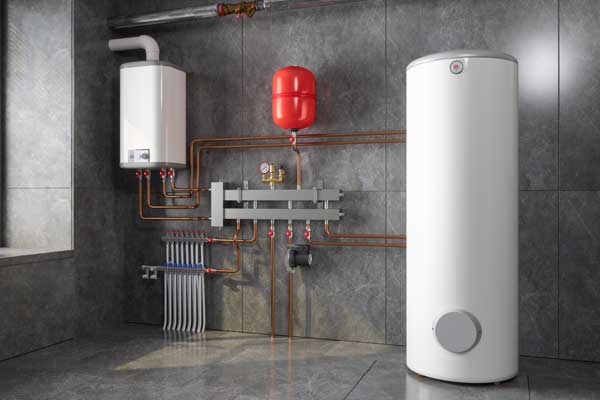Best Practices for Caring for Your Home's Hot Water SystemStep-by-Step Steps to Maintaining Your Home's Hot Water SystemEffective Techniques for Maintaining Your Home's Hot Water System
Schedule EstimateThe writer is making several great observations related to How to Maintain a Hot Water Heater in a Few Simple Steps in general in this post beneath.

Warm water is important for everyday convenience, whether it's for a refreshing shower or cleaning dishes. To ensure your hot water system runs effectively and lasts much longer, regular upkeep is key. This post gives sensible suggestions and understandings on just how to maintain your home's hot water system to avoid interruptions and pricey fixings.
Introduction
Keeping your home's hot water system might seem challenging, however with a few simple steps, you can guarantee it runs efficiently for many years to find. This overview covers everything from understanding your hot water system to DIY upkeep pointers and recognizing when to call in expert aid.
Significance of Preserving Your Hot Water System
Routine maintenance not just expands the life-span of your warm water system yet additionally guarantees it operates effectively. Ignoring upkeep can cause lowered effectiveness, greater energy expenses, and even premature failure of the system.
Indications Your Warm Water System Demands Upkeep
Recognizing when your warm water system needs attention can stop significant concerns. Keep an eye out for indicators such as irregular water temperature level, weird sounds from the heating system, or rusty water.
Purging the Water Heater
Flushing your water heater eliminates sediment accumulation, enhancing performance and prolonging its life.
Monitoring and Changing Anode Rods
Anode rods stop deterioration inside the tank. Examining and replacing them when worn is important.
Complicated Problems Calling For Specialist Assistance
Examples consist of significant leaks, electric troubles, or if your hot water heater is constantly underperforming.
Routine Specialist Maintenance Benefits
Expert maintenance can include comprehensive assessments, tune-ups, and ensuring compliance with safety and security requirements.
Examining and Adjusting Temperature Settings
Readjusting the temperature setups makes sure optimal performance and safety and security.
DIY Tips for Upkeep
You can execute a number of upkeep tasks on your own to keep your hot water system in top problem.
Checking for Leakages
Regularly inspect pipes and connections for leaks, as these can bring about water damage and higher bills.
Understanding Your Hot Water System
Prior to diving right into upkeep tasks, it's handy to comprehend the standard components of your hot water system. Commonly, this consists of the water heater itself, pipes, anode poles, and temperature level controls.
Monthly Upkeep Tasks
Normal monthly checks can aid capture minor problems prior to they rise.
Evaluating Pressure Alleviation Valves
Evaluating the pressure safety valve guarantees it operates correctly and avoids excessive stress buildup.
Protecting Pipelines
Insulating warm water pipelines minimizes heat loss and can save energy.
When to Call a Professional
While do it yourself upkeep is useful, some problems call for specialist experience.
Conclusion
Routine upkeep of your home's hot water system is essential for effectiveness, long life, and price savings. By adhering to these pointers and knowing when to look for professional assistance, you can make certain a trusted supply of hot water without unexpected disruptions.
How to Maintain an Instant Hot Water Heater
Before tinkering with your hot water heater, make sure that it’s not powered on. You also have to turn off the main circuit breaker and shut off the main gas line to prevent accidents. Also turn off the water valves connected to your unit to prevent water from flowing into and out of the appliance. 2. When you’re done, you have to detach the purge valves’ caps. These look like the letter “T” and are situated on either side of the water valves. Doing so will release any pressure that has accumulated inside the valves while at the same time avoid hot water from shooting out and burning your skin. 3. When the purge valves’ caps are removed, you have to connect your hosing lines to the valves. Your unit should have come with three hoses but if it didn’t, you can purchase these things from any hardware or home repair shops. You can also get them from retail stores that sell water heating systems. Read the user’s manual and follow it to complete this task properly. When the hosing lines are connected, open the purge port’s valves. 4. You should never use harsh chemical cleaners or solutions when cleaning your unit. Make use of white vinegar instead. It should be undiluted and you’ll probably use about 2 gallons. 5. Now flush your water heater. This task should probably take about 40 minutes. We can’t give you specific directions for this because the procedure is carried out depending on the type, model and brand of your heater. With that being said, refer to the user’s manual. 6. When you’re done draining the unit, you have to turn off the purge port valves again. Remove the hosing lines that you earlier installed on each of the water valves. Put the valve caps (purge port) back in their respective places and be very careful so as not to damage the rubber discs that are found inside these caps. 7. Now that everything’s back in place, check your user’s manual again to find out how to reactivate your water heating system. 8. Once it is working, turn one of your hot water faucets on just to let air pass through the heater’s water supply pipes. Leave the tap on until water flows smoothly out of it. https://www.orrplumbing.com/blog/2014/september/how-to-maintain-an-instant-hot-water-heater/

As a person who reads on Water Heater Maintenance Tips You Can't Afford to Forget, I thought sharing that information was a smart idea. Sharing is caring. One never knows, you may be helping someone out. I praise you for being here. Come back soon.
Detail